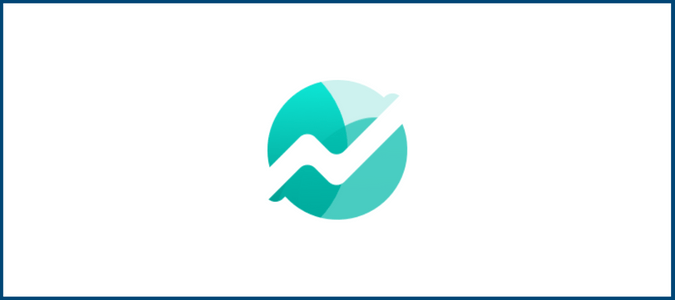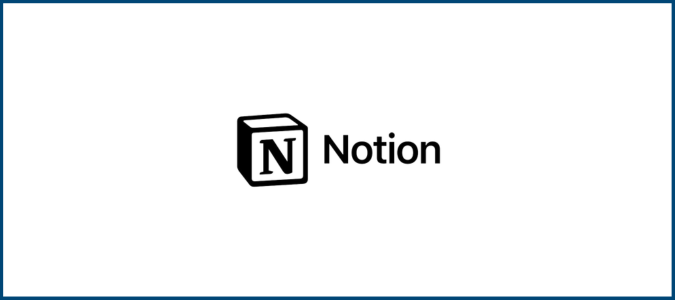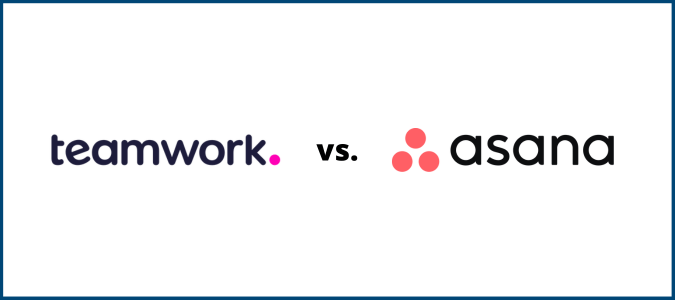Trello and Monday.com are both fantastic project management tools that organizations can use to keep track of tasks and deadlines. They both have different features that make them unique and each has its own advantages and disadvantages.
Trello is a Kanban-style project management tool that uses cards and boards to visualize tasks and deadlines. It is very flexible and easy to use, making it a great tool for small businesses or individual use cases. However, it can be difficult to scale up with Trello and it doesn’t have some of the more advanced features that Monday.com has.
Monday.com is a project management tool that uses a grid system to visualize tasks and deadlines. It is also very easy to use and has a lot of features that make it great for large organizations. It also offers lots of customizability and scalability within teams.
So which is the better option? Let’s explore some of the key differences between these two project management tools.

Trello and Monday.com Compared to the Best Project Management Software
Below, you’ll find our Golden Eggs, the best project management software out of the many tools we’ve used.
ClickUp is one of the most comprehensive project management tools on the market. It offers multiple views, real-time reporting, customizable dashboards, and some of the best integration power we’ve seen.
Smartsheet is another one of our favorites. It’s a spreadsheet-oriented project management tool that’s best for flexibility.
Teamwork is the best project management software for client services businesses. Its timesheet feature is fantastic for tracking billable hours and has a great interface for managing multiple projects with different team members.
Trello Compared to Monday.com
Now that we’ve shared a few of our Golden Eggs and who they’re best suited for, let’s get into the nitty-gritty and compare Trello vs. Monday.com.
Trello Highlights
Trello is a user-friendly, Kanban-style project management tool that allows users to move cards between sections to indicate progress. It allows users to add attachments, create checklists, and assign due dates to cards. Trello also has a calendar view and a power-up that allows users to create Gantt charts.
When adding others to the Trello workspace, admins can delegate tasks to team members and get notified each time those team members move a card to the next stage. The platform also allows for in-app commenting and @-mentions.
Trello’s mobile app has the same functionality as the desktop version. Users can also receive push notifications for card assignments, updates, and comments.
Monday.com Highlights
Monday.com is a cloud-based project management tool that offers a grid view, kanban boards, table views, Gantt charts, and calendar views. It also allows users to add attachments, create checklists, and assign due dates to tasks.
The platform has a team collaboration feature that allows users to @-mention team members in comments and get notified when someone mentions them. It is also useful for managing a sales pipeline as it allows users to see qualified leads, won deals, and lost deals in the same place.
Monday.com’s data visualization features are among the most powerful. For each team member and designated KPI, users can see a list of all the tasks completed, what’s in progress, and what’s coming up. The platform also allows for custom reports and integrations with Google Analytics, Salesforce, and many other enterprise systems.
Trello vs. Monday.com: Pros and Cons
When testing dozens of products, including Trello and Monday.com, we made a lot of discoveries about which tool is best suited for certain types of projects. Here’s an in-depth overview of the pros and cons of each tool.
Where Trello Shines
Anyone Can Use It: Perhaps the best thing about Trello is that it is so user-friendly. Even if you’ve never used a project management tool before, you’ll be able to figure out Trello in no time. And for those who need to manage a team of workers unfamiliar with project management tools, Trello is an excellent choice because of its low learning curve. For businesses with limited resources, using Trello means that they don’t need to spend time or resources on onboarding.
Fantastic for Simple Projects: If you’re working on a small project with a limited number of tasks, Trello is going to be more than sufficient. In fact, it may even be overkill to use a more complex tool like Monday.com for such a project.
Responsive Mobile App: Trello’s mobile app is just as user-friendly as the desktop version and allows users to do everything they can do on the desktop version. On your smartphone, use your thumbs to drag and drop cards between sections, add attachments, create checklists, assign due dates, and communicate with other project stakeholders on the go.
Solid Value For The Money: Trello offers a free tier with unlimited boards, cards, and lists. The paid tiers start at $5 per user per month and include features like larger file attachments, board collections, and unlimited power-ups.

Individual Use Cases: Trello isn’t just for project management. It can also be used to take personal notes (e.g., grocery lists, travel plans, to-do lists), brainstorm ideas, and even plan events. And because it’s free to use for individual users and has a fantastic mobile app, it is an intuitive way to be more productive in all aspects of your life.
Fast and Detailed Overviews On Cards: Trello’s card interface is simple and straightforward with labeling, tags, and comments. All the information you need about a task is displayed on the card, including attachments, checklists, comments, due dates, and more. And since you can color-code everything, organize by urgency, and add as many details as you need, it’s easy to get a clear overview of your project at a glance.
Helpful Power-Ups: Trello offers numerous integrations, or “power-ups,” that can be added to boards to make them more powerful. For example, the Calendar power-up allows users to see all their tasks in a calendar view, while the Slack power-up allows users to receive notifications in Slack whenever something happens in Trello. There are also power-ups for Google Drive, GitHub, and many other popular productivity tools.
Easy Documents and File Upload: One of the most useful features in Trello is the ability to upload files and documents from your computer or directly from a URL. This is especially handy when you need to share large files, such as images, videos, or PDFs from Dropbox or Google Drive.
Easy Remote Project Management: Whether you’ve just hired a new VA to help you with administrative tasks or you’re working with a team of distributed workers, Trello makes it easy to add and remove people from projects. You can also give users different levels of access, so they can only see what’s relevant to them.
Where Trello Needs Improvement
Only Supports Kanban Methodology: Trello is a Kanban-style project management tool, which means it’s designed for linearly managing tasks. If you need to use a different methodology, such as scrum or Agile, Trello may not be the right tool for you.
Subpar Commenting Feature: When you reply to a comment on most tools, a new thread begins that separates the response from other comments. This makes it easy to follow the conversation. However, on Trello, replies are nested above the original comment in their own box, making them difficult to read.
Limited Reporting: Just like with its commenting feature, Trello’s reporting is also limited. The tool only offers a few basic reports, such as the number of completed tasks and the amount of time spent on each task. And while they do have power-ups that include reporting features, these are not the same as a PM tool with built-in reporting. If you need more detailed reports, you’ll need to look elsewhere.
Not Ideal for Large Projects: Trello is a fantastic tool for managing small projects with a few team members. However, it can quickly become cumbersome when managing large projects with many moving parts. This is because there is no easy way to see an overview of all the tasks in a project or to get a bird’s-eye view of how each task is progressing. And for development or business projects with lots of moving parts, Trello doesn’t have the power to keep up.
Where Monday.com Shines
Many Possible Project Views: Monday.com gives teams everything they need to see projects in their entirety. Kanban, Gantt, timeline, table, and calendar views give team members different ways to see tasks and progress—and each team member can choose the one that’s best for them. This is especially helpful for large projects with many moving parts.
Built-In Time Tracking: Surprisingly, few project management systems have built-in time tracking features. Monday.com, however, has a timer that team members can start and stop with just one click. This makes it easy to track how much time is being spent on each task and to ensure that tasks are being completed within the allotted time frame. Best of all, it comes at no extra charge.

Numerous Customization Options: One of the best things about Monday.com is that it’s highly customizable. Users can create custom fields, templates, and workflows to fit their specific needs. And if you need even more customization, there are dozens of third-party integrations available. Whether it’s help desk tickets, event planning, PMO, or something else entirely, you can be sure there’s a customizable template that will fit your needs.
Workflow Automation: Workflow automation is one of Monday.com’s most powerful features. With just a few clicks, you can automate repetitive tasks, such as sending weekly reports or assigning new tasks to team members. You can also automate messaging tasks and timesheets. This saves you time and helps ensure that tasks are being completed correctly and on time.
Drag-and-Drop Mechanics: Drag-and-drop features always make PM software more user-friendly. Monday.com is no exception. With its drag-and-drop mechanics, you can quickly and easily move tasks around, assign team members, set deadlines, add comments, attach files, and more.
You can also use them to create your own workflows, tinker with templates, and build custom fields.
Where Monday.com Needs Improvement
Task Dependencies Limited to Due Dates: Task dependencies are a crucial part of any project management system. They allow you to see which tasks need to be completed before others can begin. Monday.com does have task dependencies, but they’re limited to due dates. This means that if other factors need to be taken into account—such as the completion of another task—you won’t be able to see that in Monday.com.
Missing Idea Management Features: Monday.com would be a better project management software if it was able to capture and track ideas. This is a crucial part of the innovation process, but it’s something that Monday.com doesn’t do well. Some integrations can help with this, but project management tools should have built-in note-taking and brainstorming features.

Expensive Pricing Model: Compared to other platforms, Monday.com is pricey. Even with its Standard plan, which costs $10 per user per month, you won’t get Monday’s automation features that make it such an amazing tool. To get those, you’ll need to upgrade to the Pro plan, which costs $25 per user per month.
The Last Word on Trello Compared to Monday.com
Trello and Monday.com are both great project management software options. And they both have their own strengths and weaknesses. It ultimately comes down to what you need and what you’re willing to pay.
If you’re someone who just needs to manage to-do lists, have a few projects to manage that don’t require much integration, or have to manage multiple projects with repeatable or separable tasks (e.g., an agency), Trello is the perfect option. It’s a friendly, responsive, and cost-effective tool that’s bound to make your life easier.
But if you need more powerful features, such as automation, dashboards, analytics, and customization, Monday.com is the better choice. It has everything you need to manage large projects with ease, including built-in time tracking, numerous customization options, workflow automation, and drag-and-drop mechanics. And if you need even more power, there are dozens of integrations available.
Out of all the project management tools, we’ve narrowed down the best to just six. To learn more about our Golden Eggs, click here to read the full list.















